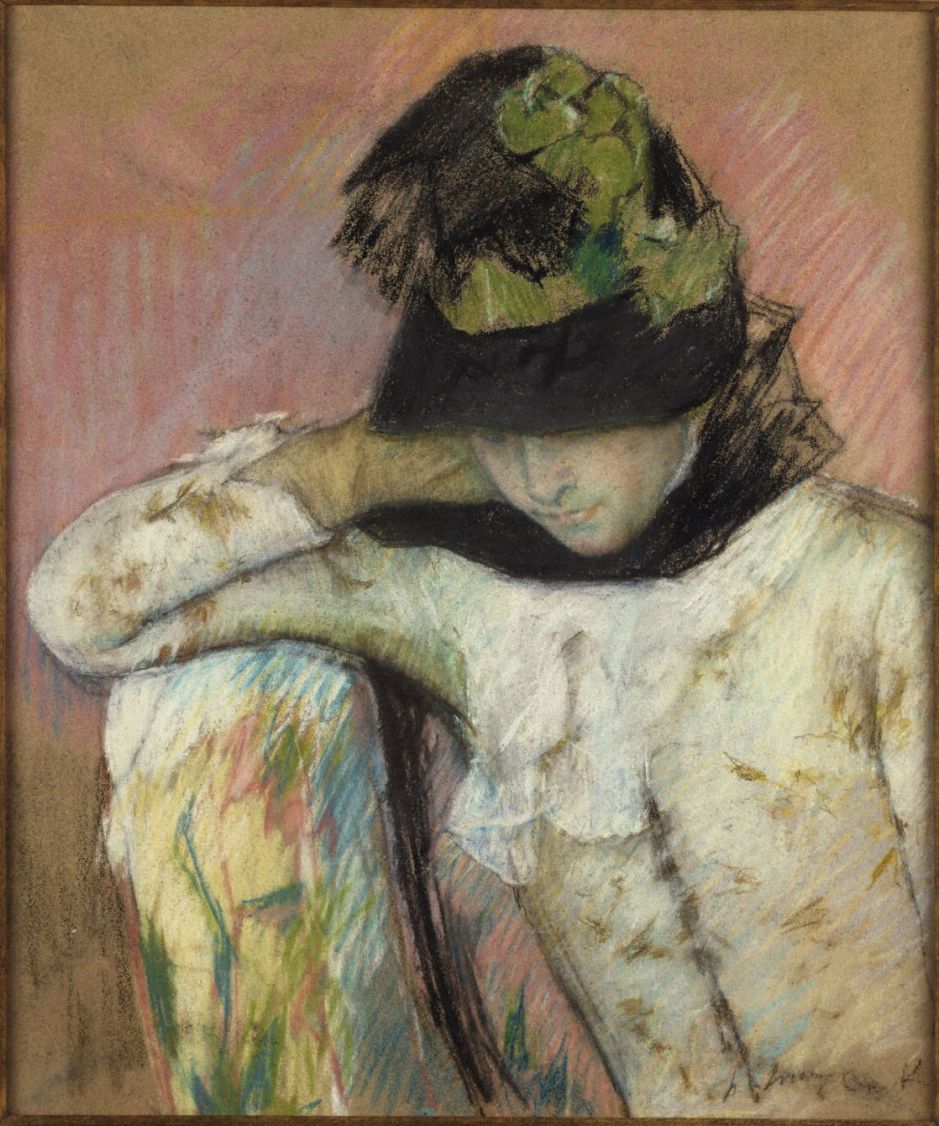Mary Cassatt (1844–1926), the best-known of the women Impressionists, was versatile in her media. In addition to painting in oils and pastels, she was an accomplished print-maker, a skill which she improved during her long friendship with Edgar Degas. It’s sometimes implied that Degas also taught her pastels, but as I’ll show shortly that isn’t correct.
Cassatt received a classical academic training in art, first alongside Thomas Eakins at the Pennsylvania Academy of Fine Arts, and later in the studio of Jean-Léon Gérôme in Paris. Significantly, in late 1866 she joined a class taught by the portraitist Charles Chaplin, at the time that he was also teaching Eva Gonzalès, who also went on to become a fine painter in pastels. Chaplin (no relative of the silent movie star) was known for his pastel portraits, and may have been responsible for teaching both of them pastel techniques.

Cassatt had initial success in 1868, when two of her paintings were accepted for the Salon, making her one of the first two women, alongside Elizabeth Jane Gardner, to exhibit in the Salon. From the same year, her pastel painting of Child Drinking Milk attests to an already high standard in the medium, and to a modern style.

Moise Dreyfus (1879) is a pastel portrait of an art collector who became a close friend and early patron; this work was also shown at the Fourth Impressionist Exhibition. In 1894, a relative of his, Alfred Dreyfus, was accused of handing secret documents to the German military, which turned into a major national scandal, the Dreyfus Affair, accompanied by a wave of anti-Semitism.
Many of Cassatt’s mature pastel paintings are of women and children, and some of her most brilliant are double portraits of mother and infant.

Mother Combing Child’s Hair (1879) is another superb pastel painting which would have involved Degas, no doubt, and shows her mature style, with rich mark-making in much of the painting apart from the skin.

This quick pastel sketch of a Woman on a Bench (c 1881) shows Cassatt’s use of diagonal strokes to lay down colour, a feature of many of Degas’ pastel paintings.

In 1888, she painted this Portrait of Alexander J. Cassatt, her brother, who followed in their father’s footsteps and became president of the Pennsylvania Railroad.

Towards the end of the nineteenth century, she continued to paint frequently in pastels. Young Woman in a Black and Green Bonnet, Looking Down dates from around 1890, and shows the rich range of marks she used, and their apparent spontaneity. Although in her print-making she had to work hard to give surfaces depth and texture, she had no such limitations in her pastel paintings.
Her motif makes for interesting comparison with those of Degas. Cassatt’s model shows no evidence of being posed, and appears relaxed and natural. Her eyes are covered by the brim of her hat, which allows her privacy and self-respect. Degas and Cassatt shared many of their techniques, but their choice of motifs and their composition remained quite distinct.

The closing years of the century brought a succession of pastel portraits, including this Mother Playing with Child from about 1897.

Cassatt’s portrait of Adaline Havemeyer in a White Hat from about 1898 shows the daughter of a prominent industrialist from New York City, who made his fortune from the refining of sugar. The sitter would have been only fourteen at the time of this painting, and lived until 1963.

Cassatt’s art never grew bland, though. This superb pastel painting of Margot in Orange Dress (1902) is as vibrant in colour as the works of many of the post-Impressionists of the day.
As a result of their conflicting positions on the Dreyfus Affair, the French national political scandal of the time, Degas and Cassatt had grown apart before the end of the century. By 1914 deteriorating eyesight and increasing infirmity forced her to stop painting. Degas died in 1917, and Mary Cassatt in 1926.
Reference

